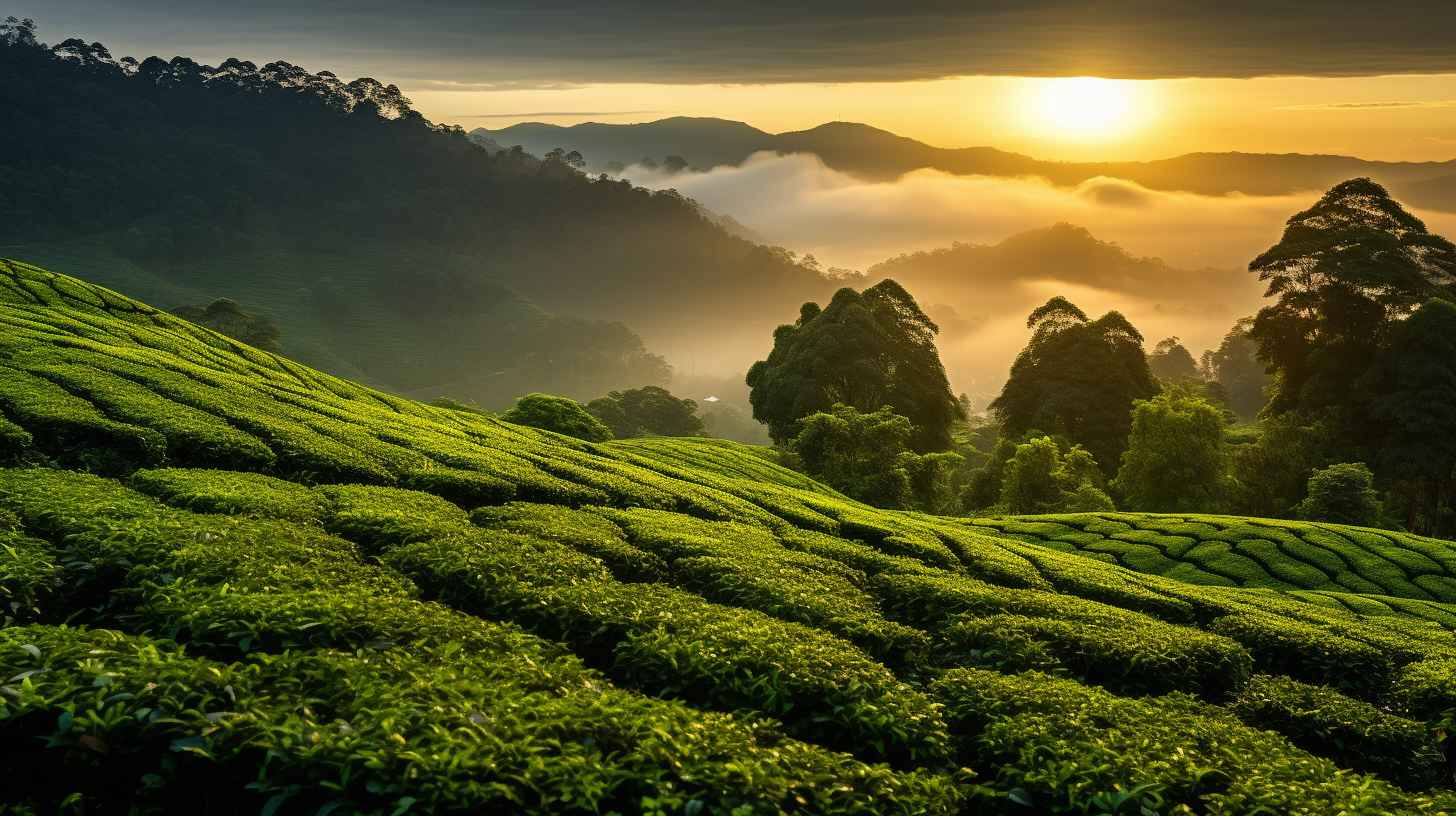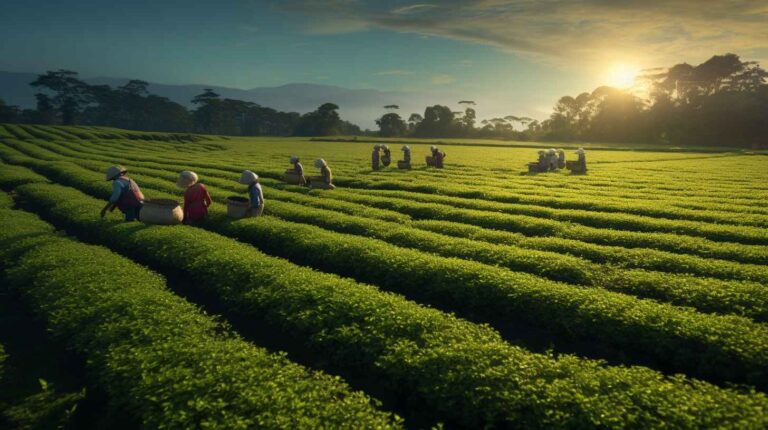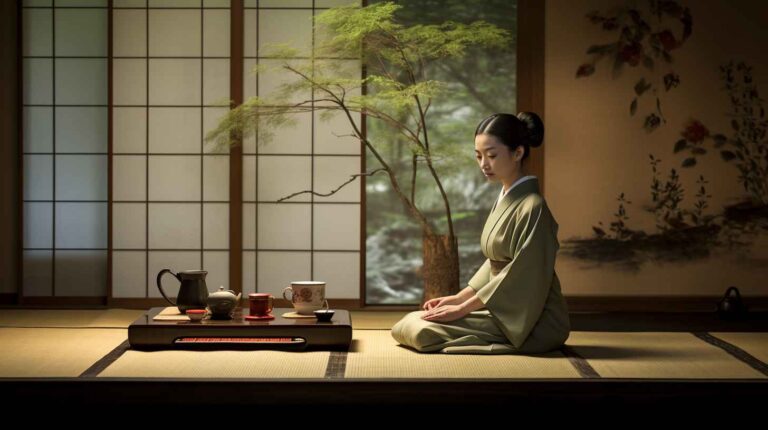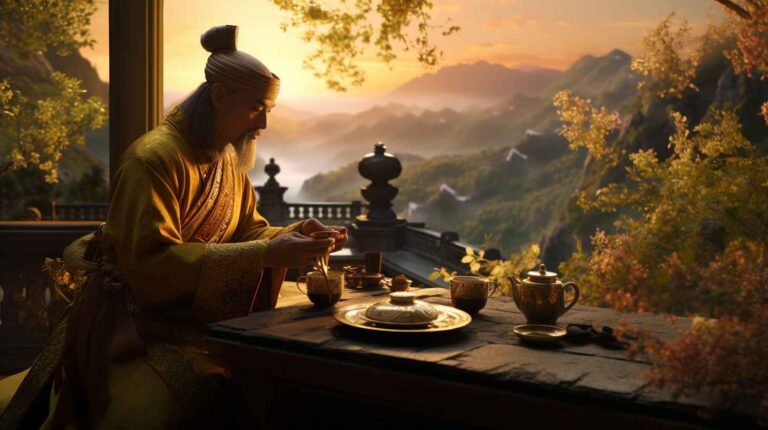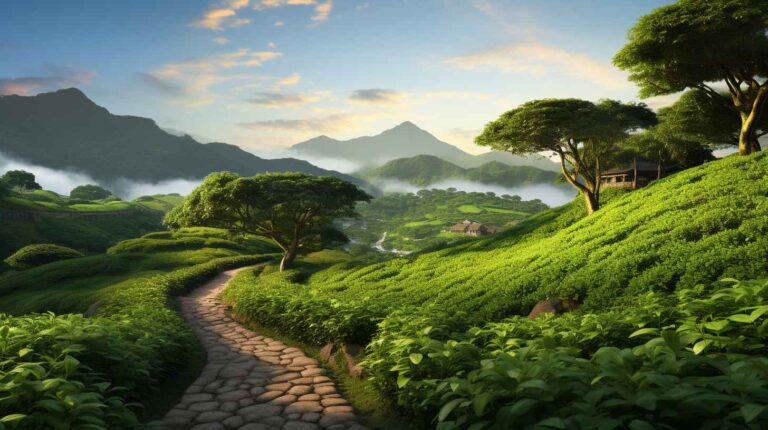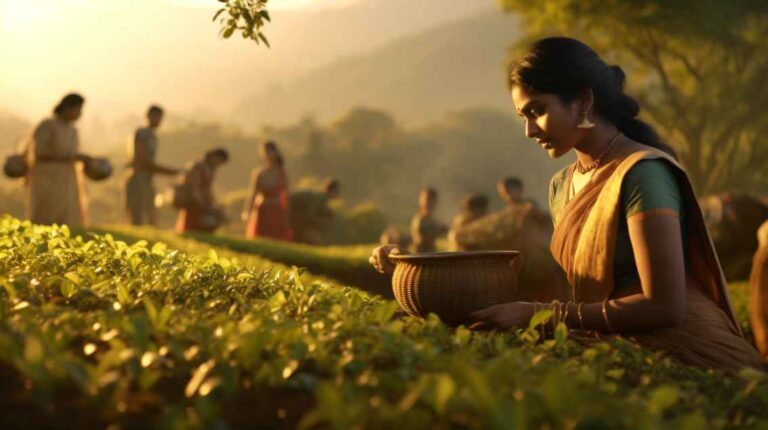Darjeeling: The Accidental Discovery of the ‘Champagne of Teas’
Introduction
High above the ground, where the horizon meets the sky, is the quaint town of Darjeeling. Nestled amidst the undulating landscapes of northeastern India, this town is a haven for tea enthusiasts. Famous for its crisp air, panoramic views, and, of course, its unparalleled tea, Darjeeling has become the epitome of high-quality brews. Often compared to the finest of wines, the “Champagne of Teas” boasts a delicate flavor and an unmistakable muscatel aroma. Beyond the taste and scent, though, lies an intriguing history of serendipity, colonization, and trade.
The Terrain and Climate: A Serendipitous Combo
Picture vast expanses of untouched forest, with an occasional native animal wandering through. That was Darjeeling before its transformation. When the British colonized the region in the mid-19th century, it was a largely unexplored terrain, with its potential waiting to be uncovered.
The initial British intent wasn’t to cultivate tea. They had visions of various agricultural enterprises taking root there. Yet, nature had its designs. The elevations reaching up to 6,000 feet, combined with fertile, loamy soils, were perfect for tea. Add to this the blessings of frequent rainfall and the temperate climate—a recipe for tea cultivation success was inadvertently crafted. This environment bestowed the Darjeeling tea with its signature flavor, a flavor profile that couldn’t be replicated anywhere else.
A Scottish Surgeon’s Experiment
Enter Dr. Campbell, a Scottish surgeon with a penchant for horticulture. Stationed in Darjeeling during the 1840s as a representative of the British empire, he saw more in the region than just its scenic beauty. Curiosity led him to plant Chinese tea seeds in his garden, a small experiment that was about to change the trajectory of Darjeeling’s history.
The saplings flourished. They not only survived but thrived, resulting in a tea that was markedly different from the bold, full-bodied Assam variety. It was lighter, more aromatic, and had a unique character, an allure that was hard to resist.
The British Intervention and Expansion
News of Dr. Campbell’s success reached the corridors of the British East India Company. Realizing the commercial potential, they embarked on a mission to transform Darjeeling into a sprawling tea estate. By the late 1850s, vast areas of the region were carpeted with tea bushes, turning the previously desolate landscape into a patchwork of verdant green.
To sustain this booming industry, manpower was essential. The British brought in laborers from neighboring regions, such as Nepal, Sikkim, and Bhutan. This migration not only changed the demographics but also introduced a mosaic of cultures, traditions, and languages, making Darjeeling a melting pot of diverse communities.
As the tea from these plantations made its way to England, it was met with immense appreciation. The English aristocracy, known for their discerning taste, were smitten. Darjeeling tea quickly became a sought-after luxury, gracing the tables of the elite and elevating its status on the global stage.
The Chinese Influence
Though the setting was Indian, the soul of the initial Darjeeling tea was undeniably Chinese. The seeds that Dr. Campbell used traced their lineage back to China. This cross-continental influence added an interesting twist to the Darjeeling tea narrative.
When the Chinese tea plants met the wild flora of Darjeeling, a magical hybridization occurred. This symbiotic relationship led to a cultivar that was uniquely Darjeeling, one that embodied the floral and delicate nuances of Chinese teas while being firmly rooted in Indian soil. It’s this duality, this blend of the East, that set Darjeeling tea apart from its counterparts, making it an exotic and enticing option for tea lovers.
Navigating the Challenges
Every success story has its share of challenges, and Darjeeling tea was no exception. The very factors that made the region perfect for tea—its location, terrain, and climate—also made it vulnerable. Political turbulence, frequent strikes, and the ever-looming threat of climate change cast shadows over the tea gardens.
Yet, the spirit of Darjeeling was resilient. Plantation owners, workers, and the community at large rallied together to ensure that the quality of their prized tea never wavered. When counterfeit Darjeeling teas began flooding the market, a certification mark was introduced in 2004, safeguarding the legacy and authenticity of the true Darjeeling tea.
Darjeeling Today: Beyond Black Tea
In the ever-evolving world of teas, Darjeeling has managed to not only maintain its iconic status but also diversify its offerings. The times have changed, and so have the tea connoisseurs. No longer satisfied with just the traditional black tea, they have developed a palate that yearns for variety, and Darjeeling has risen to the occasion.
The Diversification of Darjeeling Teas
The traditional black tea, though still a favorite, is now joined by an array of other variants. Green tea, with its subtle notes and myriad health benefits, has found a home in Darjeeling’s terraced gardens. The pristine environment ensures that the green tea retains its antioxidants, offering not just a delightful taste but also wellness in every cup.
White tea, the least processed of all teas, demands utmost care in its production. Darjeeling’s meticulous tea growers have mastered the art of crafting this delicate tea, which is celebrated for its subtle flavor and natural sweetness.
Oolong, a category that sits somewhere between green and black tea, is another entrant to the Darjeeling portfolio. With its partially oxidized leaves, Oolong from Darjeeling boasts a unique flavor profile, oscillating between the freshness of green tea and the depth of black tea.
First and Second Flush: A Seasonal Affair
Modern tea aficionados have a discerning approach to their brews, often basing their preferences on the harvesting season. The first flush, which refers to the spring harvest, yields a tea that’s light, bright, and bursting with fresh flavors. These teas are a reflection of the rejuvenation that spring brings to the tea bushes after the winter dormancy.
The second flush, harvested in the early summer, is a more robust affair. The teas from this period are characterized by their full-bodied flavor, amber-hued liquor, and the trademark muscatel aroma. This unique taste, reminiscent of Muscat grapes, is a rarity in the tea world and is exclusively associated with second flush Darjeeling teas.
A Cultural and Economic Lifeline
Beyond its global fame as a tea-producing region, Darjeeling is a mosaic of cultures, traditions, and stories. The tea estates are microcosms of society where life revolves around tea.
Communities Rooted in Tea
Each tea garden has its rhythm, set by the daily routines of plucking, processing, and packaging. But there’s more to these gardens than just tea. They are homes to generations of families who’ve been associated with tea cultivation for decades. Their stories, aspirations, and dreams are interwoven with the leaves they nurture.
Festivals, celebrations, and community events are commonplace, adding color and vibrancy to the otherwise monotonous routine. These events not only serve as a break from work but also strengthen community bonds.
The Magnetism of Tea Tourism
The allure of Darjeeling isn’t limited to its tea; it’s also about the experience. Tea tourism has witnessed a significant surge, with enthusiasts eager to immerse themselves in the journey of tea. From plucking fresh leaves alongside seasoned tea pickers to understanding the intricacies of processing, visitors get a hands-on experience.
Staying in colonial-era bungalows, walking through the mist-covered plantations at dawn, and sipping on fresh brews while overlooking the majestic Himalayas—this is the Darjeeling experience that travelers cherish.
Conclusion
Darjeeling’s journey from an obscure land to the global tea capital is a tale of serendipity, tenacity, and vision. Dr. Campbell’s humble experiment laid the foundation for a legacy that would go on to shape the fortunes of countless individuals and put Darjeeling on the world map.
Each cup of Darjeeling tea tells a story—a story of the land, the people, the challenges, and the triumphs. When we savor its flavors, we’re not merely enjoying a beverage. We’re partaking in a rich tapestry of history, culture, and nature. The “Champagne of Teas,” with its golden hues and unmatched aroma, is a testament to nature’s generosity and mankind’s relentless pursuit of excellence. It serves as a reminder that sometimes, the most extraordinary things come from the simplest of beginnings.
